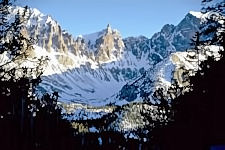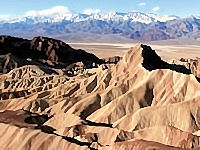Parks by State
- Alabama State Parks
- Alaska State Parks
- Arizona State Parks
- Arkansas State Parks
- California State Parks
- Colorado State Parks
- Connecticut State Parks
- Delaware State Parks
- Florida State Parks
- Georgia State Parks
- Guam Parks
- Hawaii State Parks
- Idaho State Parks
- Illinois State Parks
- Indiana State Parks
- Iowa State Parks
- Kansas State Parks
- Kentucky State Parks
- Louisiana State Parks
- Maine State Parks
- Maryland State Parks
- Massachusettes Parks
- Michigan State Parks
- Minnesota State Parks
- Missouri State Parks
- Mississippi State Parks
- Montana State Parks
- Nebraska State Parks
- Nevada State Parks
- New Hampshire Parks
- New Jersey State Parks
- New Mexico State Parks
- New York State Parks
- North Carolina State Parks
- North Dakota State Parks
- Ohio State Parks
- Oklahoma State Parks
- Pennsylvania State Parks
- Puerto Rico Parks
- Rhode Island State Parks
- South Carolina Parks
- South Dakota State Parks
- Tennessee State Parks
- Texas State Parks
- Utah State Parks
- Vermont State Parks
- Virginia State Parks
- Virgin Islands Parks
- Washington DC Parks
- Washington State Parks
- West Virginia State Parks
- Wisconsin State Parks
- Wyoming State Parks
Northern Death Valley National Park is a lonelier, less visited section of the valley but equally scenic as the south. Higher in elevation; sloping up to 3,000 feet at Scotty’s Castle.
There are two national parks in the State of Nevada:
Great Basin National Park
Based around Wheeler Peak, the Great Basin National Park has 5,000-year-old bristlecone pines, glacial moraines, and the limestone Lehman Caves. It has some of the country’s darkest night skies, and there are animal species including Townsend’s big-eared bat, Pronghorn, and Bonneville cutthroat trout. Death Valley National Park
Death Valley National Park spans across California and Nevada. Death Valley is the hottest, lowest, and driest place in the United States. There are canyons, colorful badlands, sand dunes, mountains, and over 1000 species of plants in this graben on a fault line. Further geologic points of interest are salt flats, springs, and buttes. |
Article Index:
Death Valley National Park
A world of extremes, Death Valley National Park is the nation’s driest, hottest and lowest place, but also features mountains over 11,000 feet high that experience below-zero weather and snow, as well as colorful badlands, sand dunes and canyons. Its dramatic mountains, valleys and a world of extremes.
Death Valley is the nation’s driest, hottest and lowest place, but also features mountains over 11,000 feet high that experience below-zero weather and snow, as well as colorful badlands, sand dunes and canyons.
Sites and Trails in Northern Death Valley National Park
Northern Death Valley National Park is a lonelier, less visited section of the valley but equally scenic as the south. Higher in elevation; sloping up to 3,000 feet at Scotty’s Castle.
Sites and Trails in Southern Death Valley
The South is the most visited section of Death Valley, incuding Artist’s Palette, Badwater, Dante’s View, Devil’s Golf Course and Zabriskie Point.


